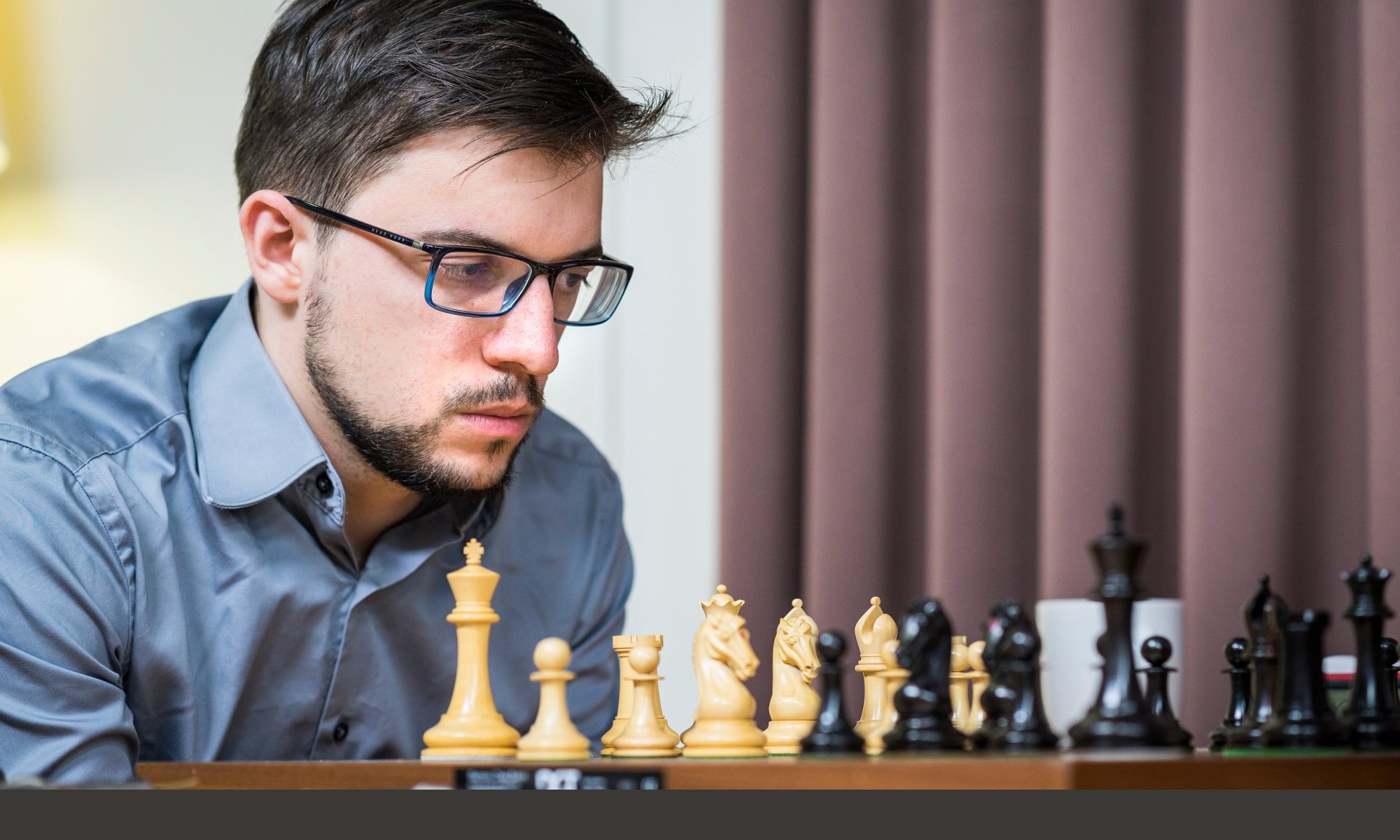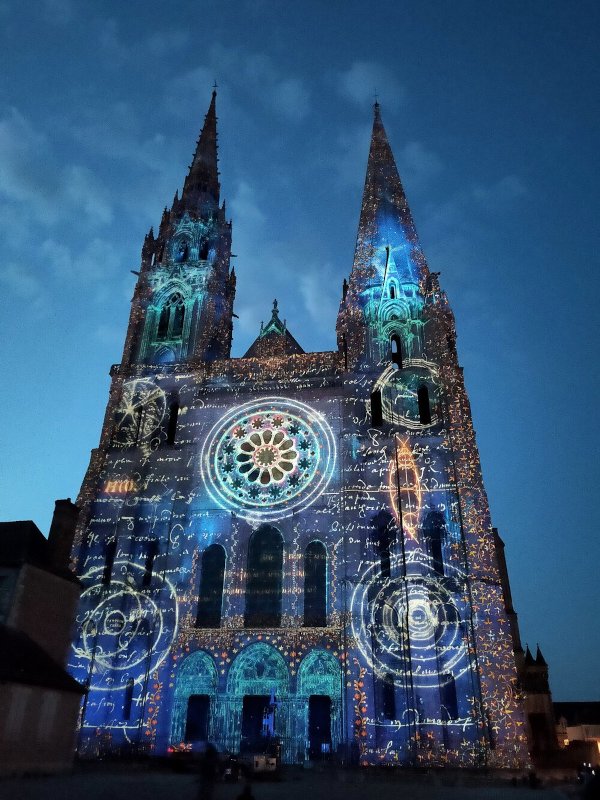The month of June was punctuated by two major team competitions, the first of which was the French Championship, held once again in a beautiful and spacious room of Chartres town hall, the city that some claim boasts the most beautiful cathedral in the world…
Top 16 in Chartres
I joined my Asnières team for the third-round derby match against Clichy, which we unfortunately lost. On my board, I drew with white against Amin Bassem, in a Spanish opening where I failed to capitalize on the advantage I’d gained in the opening. A result that immediately put us in a bit of a bind, but we made up for it afterwards 😊.
On a personal level, I’ve made a lot of draws. In fact, I’ve done nothing but draws! (6, including 4 with black).
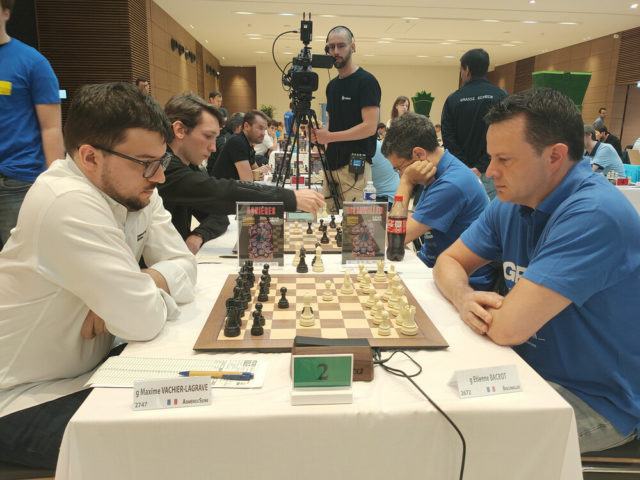
In particular, there was this game against Andrei Sokolov, which lasted 6 hours (Mulhouse-Asnières, Round 4). In this inferior endgame, he showed great defensive resources, as few people would have held this position; in any case, at his Elo (2464), hardly anyone! And even at higher Elos, I find it hard to believe that so many would have defended this endgame. He did it, reminding us of his status as a former Candidates finalist, and all credit to him for that!
SOKOLOV – MVL ½
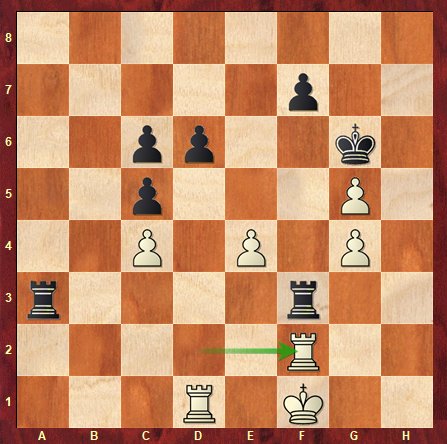
Here, I considered that 47…Rfd3 or 47…Rad3 offered little winning chances, so I decided to give up the d6 pawn with 47…Kxg5. Andrei told me after the game that he thought putting a Rook on d3 would have given better chances; for my part, I felt that exchanging my d6-pawn for his two g-pawns offered the best practical prospects. After 48.Rxd6 Kxg4, he began to find all the good moves, starting with 49.Kg2!.Any other move would have lost, e.g. 49.Rxc6? Ra1+ 50.Kg2 Rg3+ 51.Kh2 Rh3+ 52.Kg2 Rah1! with a nice mating net; or 49.Rxf3? Kxf3 50.Rf6+ Kxe4 51.Rxf7 Rf3+! and the pawn endgame is winning. After 49…Rg3+ 50.Kh2 Rh3+ 51.Kg2 Rag3+ 52.Kf1 Rh1+ 53.Ke2 Ra3, he still had to find 54.Rd3! (54.Rxc6? Ra2+ 55.Ke3 Rh3+ is trivial, but the refutation of the natural 54.Rd2? is less so: 54…Kg3! and White is in zugzwang. If the Rf2 moves, it’s 55…Rh2+; if the Rd2 moves on its column, it’s the same in reverse [55…Ra2+]; and if 55.Rb2 Rh4! picks up the e-pawn with interest, ditto after 55.e5 Rh5) 54…Raa1, and only now 55.Rd2!, which is again an only move (55.Rg2+? Kf4 56.Rf2+ Ke5! and the King’s return in the center is decisive, avoiding 56…Kxe4?? 57.Re3+ Kd4 58.Rf4 mate!). I still continued 55…Rhe1+ 56.Kd3 Ra3+ 57.Kc2 Ra7 58.Kd3 Rg1, but after 59.e5 and a few precise last moves, Andrei pocketed his deserved half-point!
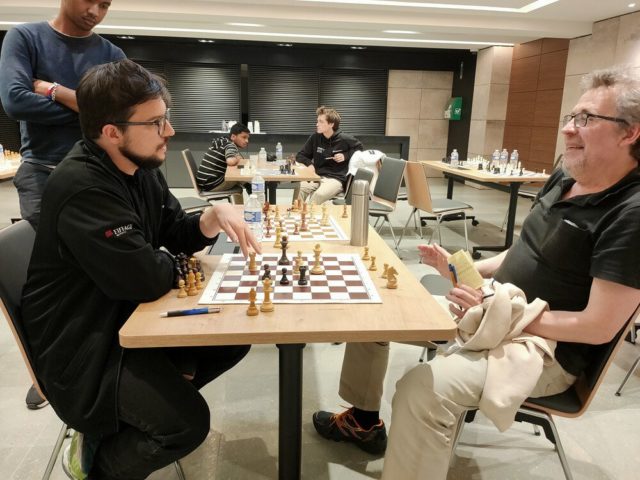
A few days later, I returned to Chartres to play in the « Poule Haute » (upper half of the championship), with only decisive matches on the program, notably the one against multiple title-holder Bischwiller. I have to admit that my games in this top group were not very exciting. I had black three times and white once.
With black, I was clearly neutralized in all three games. And with white against Vidit, I couldn’t make anything of my tiny advantage.
But the most important thing is that, after two very lively matches at the end of the top group, against Chartres and Bischwiller, we finally clinched the championship title! A big bravo to the whole team, to the captain, and to the ever-active support of the town of Asnières!
Icing on the cake, despite my absence due to the Global Chess League in Dubai (see below), Asnières completed the double by winning the French Cup in early July 😊.
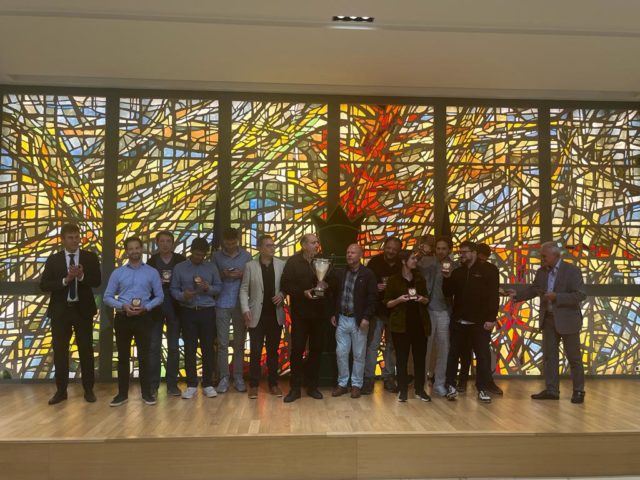
Global Chess League in Dubaï
Global Chess League (GCL). This is a new and completely different event from what we’re used to. Under the aegis of Indian giant Tech Mahindra and FIDE, this new League sees teams representing franchises compete in Rapid games. For this first edition, 6 teams were formed, with drafted players, a bit like in the NBA. The other special features were as follows: each team of 6 is made up of an Icon player, 2 super-GM’s, 2 women and a junior. In each match, one team has the same color on all boards. For scoring purposes, victory is valued at 3 points (as in soccer, for example), and a win with black even awards a bonus point. Finally, it’s a round-robin championship system, with the top two teams contesting a grand final on the last day.
With the participation of several Top 10 players (Carlsen, Nepo, Anand, Rapport), this first edition was a real eye-catcher. For my part, I was the Icon player on the Mumba Masters team, named after Mumbaï’s Indian company U Sports.
What I really liked was being able to build up a good team atmosphere, which was the case. Of course I knew Sasha (Grischuk), but I was less familiar with our Indian friends Vidit, and the women Dronavili and Koneru. Uzbek junior Sindarov completed the picture. Around the captain, GM Narayanan, who played his role well, we managed to create excellent relationships. It’s worth noting that a number of U Sports staff members were also on hand to make life easier and boost cohesion.
With the participation of several Top 10 players (Carlsen, Nepo, Anand, Rapport), this first edition was a real eye-catcher. For my part, I was the Icon player on the Mumba Masters team, named after Mumbaï’s Indian company U Sports.
What I really liked was being able to build up a good team atmosphere, which was the case. Of course I knew Sasha (Grischuk), but I was less familiar with our Indian friends Vidit, and the women Dronavili and Koneru. Uzbek junior Sindarov completed the picture. Around the captain, GM Narayanan, who played his role well, we managed to create excellent relationships. It’s worth noting that a number of U Sports staff members were also on hand to make life easier and boost cohesion.
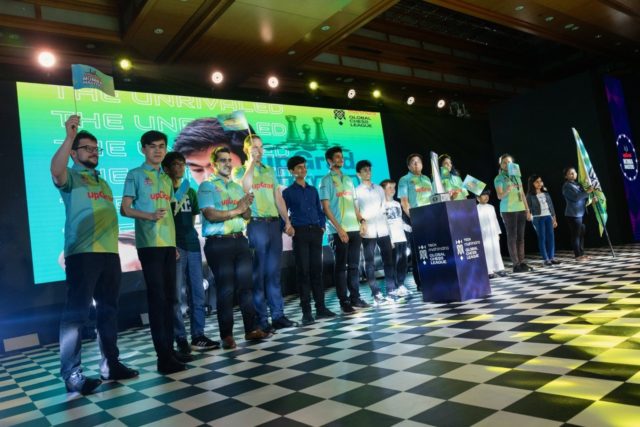
As far as the matches were concerned, it was rather strange because we played an average of one game a day, which broke the rhythm a little. As a result, we had quite a lot of free time for preparations, even if, for the first half of the tournament, we didn’t know the colors until 30 minutes before the game. All in all, this new competition turned out to be quite enjoyable, although quite nerve-wracking on the last two days, when we qualified for the final by the skin of our teeth, before going on to play a Homeric tie-break in the final!
Before this final sprint, I’d played quite a few interesting games, even if most of them ended in draws; a lot of mutual neutralization, both with white and black.
Here is an overview of my two only decisive games:
ANAND – MVL 1-0
Against Vishy, I used the Petroff and remained quite far in my home preparation. I knew there were positions in this line where I shouldn’t be afraid to « throwing wood ». I felt like I was growing wings. I knew it was a bit optimistic, but that it could also go well, which was almost the case…
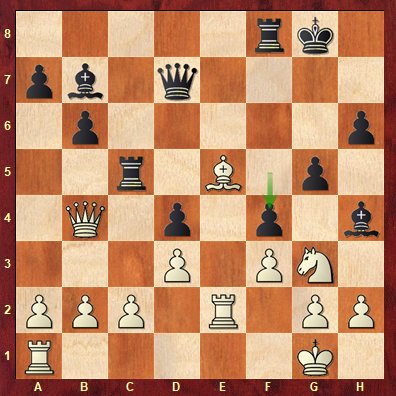
Here, Vishy saw at the last moment that after 24.Nh5? there’s 24…g4! which hurts a lot, among other things because of the X-ray between the Rc5 and the Nh5. As a result, he played 24.Bxd4 and that’s when I should have taken the Knight wisely and obtained an unclear position after 24…fxg3 25.Bxc5 bxc5 26.Qxc5 gxh2+ 27.Kxh2 Rf7; it’s very hot because I have the 2 Bishops. Admittedly, Bh4 is locked in, but I can always play …g4 if I need to, and on his side, he can’t penetrate on the e-file.
Instead, I got carried away and started calculating like a madman 24…a5? 25.Qb3+ Bd5 26.c4 Bxc4 (I had also considered 26…Bxf3 27.Bxc5 Bxe2, but after 28.Bxf8 [28.Qxb6 should work too], I don’t have a shadow of a compensation 😊) 27.Qc3 Rd5, but I forgot 28.Bf6! which, by the way, wasn’t the only good move, and then it gets really bad. 28…fxg3 29.Re7 Qd6 30.Rg7+ Kh8 31.Rf7+ Kg8 and further proof of my blindness at this point, I thought Vishy was going to take the draw, but he actually repeated once, before delivering the lethal 32.Be7! which put an end to the debate!
It was a complicated game where I felt I could get through, which is why I took maximum risks. Well, it didn’t work out, but the team won the match!
MVL – CARLSEN 1-0
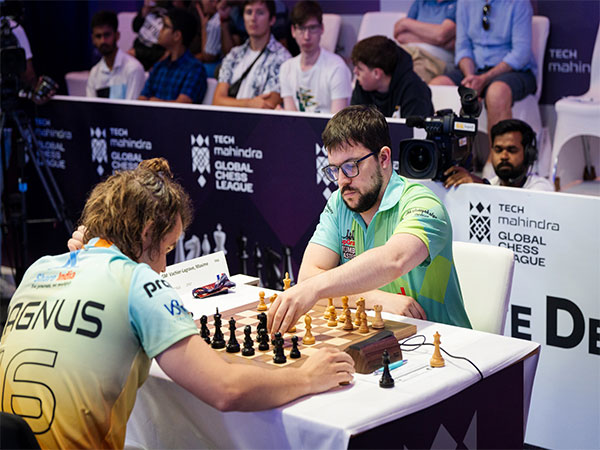
In the next match against Magnus, I faced a Berlin wall in which I managed to get some pressure going into the endgame. I was happy, but Magnus more or less neutralized me in the next phase, albeit at the cost of a lot of time.
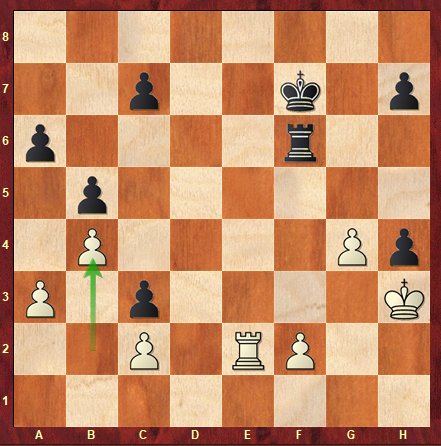
All he had to do was find 34…c5! 35.bxc5 Rc6 (or even 35…Re6), and in both cases it’s a draw. On the other hand, after his mistake 34…Rd6? 35.Re3 Rd2? (better to admit you’ve gone wrong and defend with 35…Rc6 36.Kxh4 Rc4) 36.Rxc3 Rxf2 37.Kxh4, there are too many weaknesses (in fact, all his pawns!) and it’s become untenable in practice, especially with so little time on the clock.
At the end of the return phase, we secured our place in the final by crushing the Magnus team in the last round (4 black wins and 2 draws!).
CARLSEN – MVL ½
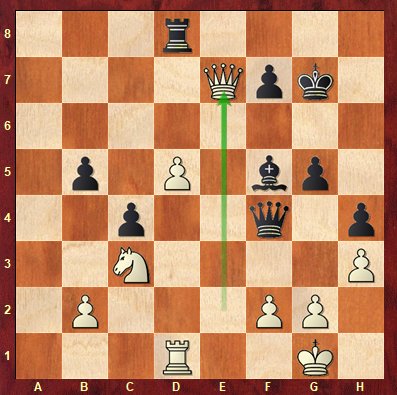
Here I committed what Magnus would later call a « lucky blunder ». My first idea was the natural 33…Rd7 but then I saw that 33…Rd6 seemed possible, with the additional possibility of transferring the Rook to f6. But just when I played 33…Rd6? I realized that there was 34.Ne2, with the black Queen overloaded. Fortunately, I managed to keep the poker face on while he was thinking! Though he won the exchange after 34…Qe4 35.Qxd6 Qxe2, Magnus had a very hard move to find to maintain the advantage. 36.Rf1! would have put me in difficulty, because after 36…Bd3 (36…Qxb2 37.Qc5! is overpowering) 37.Ra1 Qxb2 38.Re1 Qd4 39.Qe7 c3 (39…Qxd5 40.Re5!) 40.d6 with the same position as in the game, except that the Bishop has been drawn to d3 and therefore no longer controls the d7 square! White wins. A very difficult trick to envisage in a Rapid game, and Magnus continued more naturally with the immediate 36.Ra1? Qxb2 37.Re1 Qd4 38.Qe7 c3 40.d6, but with the Bishop on f5, I had time to play 40…Kg6! and force a draw after 40.Qf8 c2 41.Qg8+ Qg7 42.Qe8 Qc3 43.Qg8+ Kh6 44.Qf8+ Kg6.
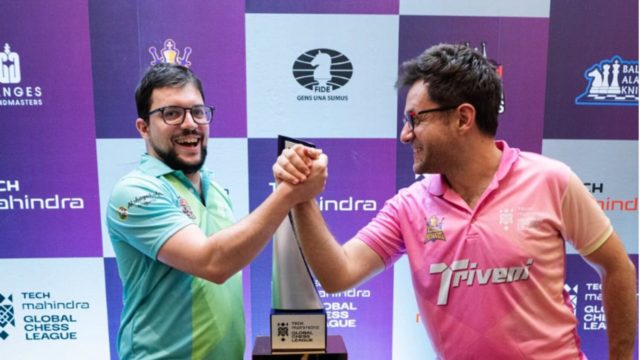
The real highlight of the Global Chess League was undoubtedly the final between my Mumba Masters team and the Triveni Continentals led by Aronian. Having won a game each in both rapid and blitz, we had to settle the tie in sudden death, another new feature of the League, which is a bit like a soccer penalty shoot-out. One of the 6 chessboards is drawn at random, and the winner of the blitz wins. In the event of a draw, another is drawn, and so on… It took 4 sudden-death blitz games to name a winner! And it was on the junior chessboard that everything was finally decided. Our team-mate Sindarov had already beaten Norway’s Bjerre four times in the tournament (!), and he was still pushing on with pawn up in the endgame when he completely forgot a mate in 1 move, bringing this beautiful new competition to a particularly cruel close!
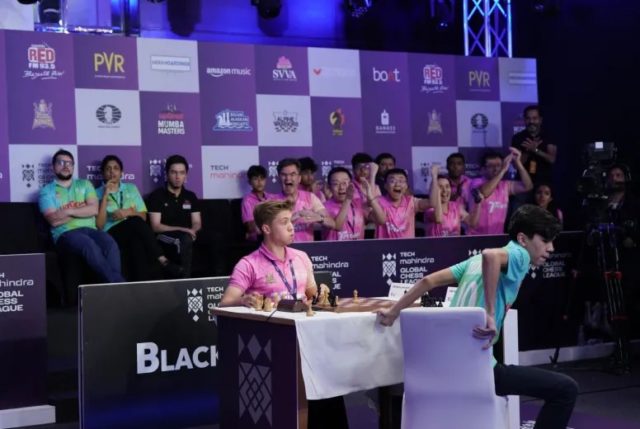
This unprecedented scenario was certainly very exciting for the spectators, but it was also very stressful to play, and even worse to watch in the sudden death session! At the start of this one, I preferred not to be drawn, but after the second game (a draw between Grischuk and Yu Yangyi), I felt it might be better to go up on stage and have a go at Aronian, but fate didn’t give me the chance.
Of course there are regrets, but after a while it’s all too quick, there’s too much tension, and it’s all down to nothing…
Enjoy your summer of chess!
As for me, the next event will be the World Cup in Baku, where I’ll start in the round-of-64 on August 2, against the winner of the preliminary round match between Austria’s Dragnev (2576) and Israel’s Kobo (2548).
Maxime’s games :
Maxime’s games in French Team Championship:
Maxime’s games in Berlin :
Maxime’s games in Dubaï :
Between the two team competitions covered in this article, Maxime spent a week in Berlin, playing the European leg of the Armageddon circuit. 8 players, a single-elimination blitz format, with the fashionable formula of a main bracket and a losers’ bracket, ensuring that no-one is eliminated without losing 2 matches.
A special feature of this Armageddon is that all games are played in the Berlin studio and filmed for TV.
Maxime finished third in the tournament, behind Rapport and Duda, who took the two qualifying spots for the Grand Final in September.
https://worldchess.com/news/all/richard-rapport-and-jan-krzysztof-duda-are-the-winners-of-the-ar/
